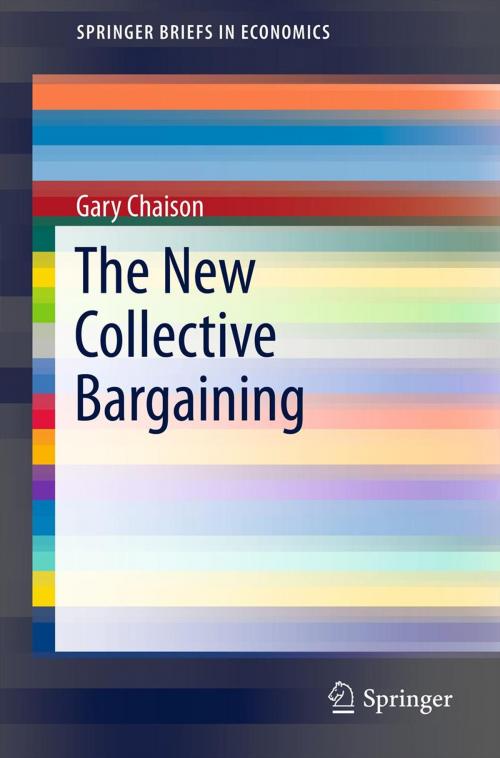The New Collective Bargaining
Business & Finance, Management & Leadership, Industrial Management, Career Planning & Job Hunting, Labor| Author: | Gary Chaison | ISBN: | 9781461440246 |
| Publisher: | Springer New York | Publication: | June 12, 2012 |
| Imprint: | Springer | Language: | English |
| Author: | Gary Chaison |
| ISBN: | 9781461440246 |
| Publisher: | Springer New York |
| Publication: | June 12, 2012 |
| Imprint: | Springer |
| Language: | English |
This book explains how collective bargaining has changed in important and lasting ways over the past decade. We are now seeing a new and powerful strain of the concession bargaining that traces its roots back to the early 1980s. The collective bargaining of the past decade can be characterized as ultra-concession bargaining because it is an intense and self-perpetuating deviation from earlier concession bargaining. Employers now act and unions react, rather than the other way around. Employers no longer have to establish a credible case of financial hardship, or commit to the traditional quid pro quo of saving jobs in return for lower labor costs, or guarantee singularity (that concession bargaining is a single even that will not have to be repeated). Not all collective bargaining occurs as this extreme variant but it has become the prevailing form. Essentially, there has been a sea change in collective bargaining in America.The book describes the transformation of collective bargaining in a lively and readable manner, avoiding academic, legalistic or technical jargon, and it will appeal to persons interested in the future directions of collective bargaining and unionism in America, (e.g., the general public, graduate and undergraduate students in human resource management and industrial relations courses, and labor relations managers and union activists and staff). The book deals with aspects of union revival as it asks whether ultra-concession bargaining is cause or outcome of the unions’ declining influence in the American economy and society. Above all, by using published reports on bargaining and interviews and surveys of bargaining settlements, the book shows where the concession bargaining is now and where it is heading.
This book explains how collective bargaining has changed in important and lasting ways over the past decade. We are now seeing a new and powerful strain of the concession bargaining that traces its roots back to the early 1980s. The collective bargaining of the past decade can be characterized as ultra-concession bargaining because it is an intense and self-perpetuating deviation from earlier concession bargaining. Employers now act and unions react, rather than the other way around. Employers no longer have to establish a credible case of financial hardship, or commit to the traditional quid pro quo of saving jobs in return for lower labor costs, or guarantee singularity (that concession bargaining is a single even that will not have to be repeated). Not all collective bargaining occurs as this extreme variant but it has become the prevailing form. Essentially, there has been a sea change in collective bargaining in America.The book describes the transformation of collective bargaining in a lively and readable manner, avoiding academic, legalistic or technical jargon, and it will appeal to persons interested in the future directions of collective bargaining and unionism in America, (e.g., the general public, graduate and undergraduate students in human resource management and industrial relations courses, and labor relations managers and union activists and staff). The book deals with aspects of union revival as it asks whether ultra-concession bargaining is cause or outcome of the unions’ declining influence in the American economy and society. Above all, by using published reports on bargaining and interviews and surveys of bargaining settlements, the book shows where the concession bargaining is now and where it is heading.















